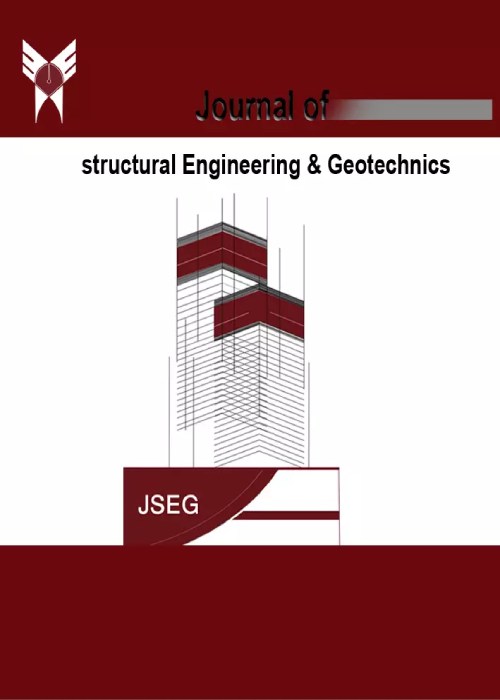The Effect of Compressive Strength Reduction of Column Section Expose due to Freezing-Thawing Cycles on the Seismic Performance of Bridges
Author(s):
Abstract:
One of the serious damages of tremendous earthquakes is the damage to bridges as the major components in an arterial road network, as relief operation is interrupted following cutting roads. Regardless of the magnitude and severity of an earthquake, other factors are also important in the strength and seismic performance of concrete bridges. Freezing-thawing cycles are among the factors, which erode the piers of concrete bridges over time. Therefore, it is necessary to evaluate the seismic vulnerability of bridges for future designs.
This research aims at discussing the effect of freeze-thaw cycles on the seismic performance of concrete bridges using fragility curves. Fragility curves express the conditional probability to reach or exceed a level of damage as a function of ground motion parameters. The curves have been developed analytically using a probabilistic method. Ground motion parameter, peak ground acceleration, structural criterion, and relative displacement of piles were considered. The non-linear time history analysis in OpenSees was used for demand determination. The curves were drawn for the slight, moderate, and extensive damage levels in two modes of before and after damage caused by thawing and freezing, i.e. the mode in which the compressive strength of column section expose reduced. With respect to the fragility curves, the strength reduction increases bridge vulnerability, especially on slight damage levels. Comparing with the cyclic curves of the most vulnerable column in two modes of before and after the damage showed that energy absorption capacity lowered with the expose compressive strength reducing.
This research aims at discussing the effect of freeze-thaw cycles on the seismic performance of concrete bridges using fragility curves. Fragility curves express the conditional probability to reach or exceed a level of damage as a function of ground motion parameters. The curves have been developed analytically using a probabilistic method. Ground motion parameter, peak ground acceleration, structural criterion, and relative displacement of piles were considered. The non-linear time history analysis in OpenSees was used for demand determination. The curves were drawn for the slight, moderate, and extensive damage levels in two modes of before and after damage caused by thawing and freezing, i.e. the mode in which the compressive strength of column section expose reduced. With respect to the fragility curves, the strength reduction increases bridge vulnerability, especially on slight damage levels. Comparing with the cyclic curves of the most vulnerable column in two modes of before and after the damage showed that energy absorption capacity lowered with the expose compressive strength reducing.
Keywords:
Language:
English
Published:
Journal of the Structural Engineering and Geotechnics, Volume:7 Issue: 1, Winter 2017
Pages:
47 to 54
https://magiran.com/p1722459


